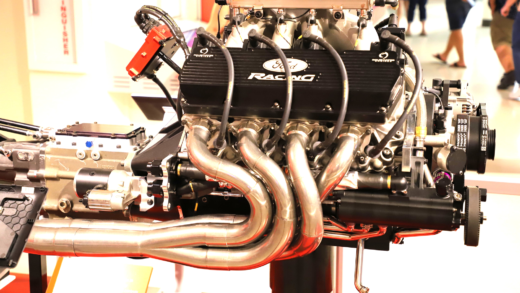Setting up an aquarium involves careful planning and execution. Start by choosing the right aquarium size based on fish species and number. Select suitable substrate and ensure proper cleaning before adding fish. Implement an effective filtration system and set up appropriate lighting. Maintain ideal water conditions and cycle your aquarium properly. Choose plants and decorations that enhance the environment. Finally, introduce fish safely to minimize stress and ensure a thriving aquatic ecosystem.
Choosing the Right Aquarium Size
Aquarium setup begins with selecting the right aquarium size. This choice is crucial because it affects the health and happiness of your fish. First, consider the species of fish you want to keep. Some fish thrive in larger tanks, while others are fine in smaller setups. Generally, a larger aquarium provides a more stable environment, allowing for better water quality and temperature control.
Here are key factors to consider when choosing your aquarium size:
- Type of Fish: Research the adult size of your fish. For example, goldfish need more space than neon tetras.
- Number of Fish: A common rule is one inch of fish per gallon of water, but this can vary based on species and their specific needs.
- Room Size: Ensure the aquarium fits comfortably in your intended space, allowing access for maintenance.
Ultimately, a well-chosen aquarium size supports a thriving aquatic ecosystem, enhancing your overall experience as an aquarium owner.
Substrate Selection
Choosing the best substrate for your aquarium is essential for creating a healthy environment. The substrate not only impacts the aesthetic but also affects the growth of plants and the well-being of your fish. Common options include gravel, sand, and specialized substrates for planted tanks.
Consider the following when selecting your substrate:
- Gravel: Ideal for most freshwater fish, it provides good drainage and is easy to clean.
- Sand: Best for bottom-dwelling species like catfish, but requires careful maintenance to avoid compacting.
- Planted Tank Substrates: Nutrient-rich substrates support plant growth, which benefits the entire aquarium ecosystem.
In summary, the right substrate will enhance both the beauty and functionality of your aquarium, ensuring a healthy habitat for your aquatic life.
Cleaning Your Aquarium Before Fish
Cleaning your aquarium before introducing fish is a vital step in the aquarium setup process. A clean tank minimizes harmful bacteria and contaminants, creating a safer environment for your new pets. Here’s how to properly prepare your aquarium:
- Rinse the Tank: Use warm water to rinse the tank thoroughly. Avoid soaps or chemicals that could leave residues.
- Clean Substrate: Rinse gravel or sand under running water until it runs clear to remove dust and debris.
- Setup Equipment: Install the filter and heater according to the manufacturer’s instructions. Ensure they are functioning properly.
- Fill the Tank: Add water gradually to prevent disturbing the substrate. Use a dechlorinator to treat tap water.
By following these steps, you ensure a clean and welcoming environment for your future fish, setting the stage for a successful aquarium experience.
Choosing the Best Filtration System for Your Aquarium
Aquarium filtration systems are essential for maintaining a healthy aquatic environment. The right filtration system not only keeps the water clean but also supports the overall ecosystem of your aquarium. Different types of filtration systems cater to various aquarium sizes and fish types. Here are the main types to consider:
- Canister Filters: These are versatile and powerful, suitable for large aquariums. They can handle a variety of media for mechanical, biological, and chemical filtration.
- Hang-on-Back (HOB) Filters: Ideal for smaller tanks, these filters are easy to install and maintain. They provide good mechanical and biological filtration.
- Sponge Filters: Perfect for breeding tanks or small aquariums, sponge filters offer gentle filtration while being safe for fry and small fish.
When selecting a filtration system, consider the size of your aquarium and the type of fish you are keeping. A well-chosen filter not only enhances water clarity but also supports the health of your fish.
Setting Up Aquarium Lighting
A proper aquarium lighting setup is vital for the health of both plants and fish. Lighting affects plant growth and helps maintain a balanced ecosystem. Different types of lights serve different purposes. Here’s what to keep in mind:
- LED Lights: Energy-efficient and long-lasting, LED lights are great for planted aquariums and provide a spectrum that promotes plant growth.
- Fluorescent Lights: These are commonly used for freshwater tanks and provide adequate lighting for most fish and plants.
- Incandescent Lights: While not as popular, they can be used for specific situations but are less energy-efficient than other options.
Ensure your lighting mimics natural conditions, with a cycle of 10-12 hours of light per day. This helps regulate fish behavior and promotes healthy plant growth.
Water Conditions for Freshwater Fish
Maintaining ideal water conditions is crucial for the health of your freshwater fish. Water parameters such as pH, temperature, and hardness need to be monitored regularly. Here are the key factors:
- pH Level: Most freshwater fish thrive in a pH range of 6.5 to 7.5. Regular testing is essential to ensure stability.
- Temperature: Keep the water temperature within the range suitable for your specific fish species, typically between 75°F to 80°F (24°C to 27°C).
- Hardness: Understand the hardness requirements of your fish; some prefer soft water while others thrive in hard water.
Regular water changes and testing can help maintain these conditions, ensuring a healthy environment for your fish to thrive.
Cycling Your Aquarium
Cycling your aquarium is a critical step in setting up your aquatic environment. This process establishes beneficial bacteria that break down harmful ammonia and nitrites produced by fish waste, uneaten food, and decaying plants. Without cycling, your fish can suffer from toxic conditions leading to stress or even death.
There are two main methods for cycling an aquarium:
- Fishless Cycling: This method involves adding ammonia to the tank without fish. You can use pure ammonia or fish food to produce ammonia as it decomposes. This approach is safer for future fish, as it avoids exposing them to toxic levels during the cycling process.
- Fish-in Cycling: This method involves adding a few hardy fish to the tank while monitoring water parameters closely. It’s riskier as fish can be exposed to harmful levels of ammonia and nitrites.
Regardless of the method, testing water parameters regularly with an aquarium test kit is essential. Aim for ammonia and nitrite levels of 0 ppm before introducing your fish. Once cycling is complete, your aquarium will be ready for a healthy and thriving aquatic life.
Choosing Plants and Decorations
Choosing the right plants and decorations can significantly enhance your aquarium’s beauty and functionality. Plants not only provide shelter and breeding grounds for fish but also help maintain water quality by absorbing nitrates and producing oxygen. Here are some tips for selecting the best options:
- Live Plants: Opt for hardy species like Java Fern or Anubias, which thrive in various water conditions and require minimal maintenance. Live plants create a natural look and improve water quality.
- Artificial Plants: If you prefer a low-maintenance option, high-quality artificial plants can add color and texture without the need for care. Just ensure they are fish-safe and have no sharp edges.
- Decorations: Consider using rocks, driftwood, or ceramic ornaments to create hiding spots and territories for your fish. Ensure that all decorations are aquarium-safe and free from harmful substances.
In summary, the right combination of plants and decorations will not only beautify your aquarium but also create a healthy environment for your fish to thrive.
Introducing Fish Safely
Introducing fish to your aquarium requires careful planning to minimize stress and ensure a smooth transition. Sudden changes in environment can shock fish, leading to health issues. Here are the steps to follow:
- Acclimation: Before adding fish, float the sealed bag in your aquarium for about 15-20 minutes. This helps equalize the temperature.
- Gradual Introduction: Slowly add a small amount of aquarium water to the bag over the next hour. This process helps fish adapt to the new water chemistry.
- Release Fish: Use a net to gently transfer the fish into the aquarium, avoiding adding bag water to prevent introducing contaminants.
Monitor your fish closely after introducing them. Look for signs of stress, such as hiding or erratic swimming. By following these steps, you can help your new aquatic friends settle into their new home smoothly and comfortably.





Comments are closed.